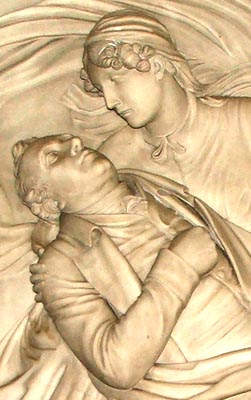 |
 |
|||
|
|
Isaac Pocock was a younger son of Nicholas Pocock Senior, a respected mariner and merchant of Bristol, who was made a freeman of that city in 1742. He was supposedly descended from the Pococks of Chieveley in Berkshire. Isaac's mother was Mary Innes, daughter and heiress of William Innes of Leuchars (Fifeshire) and, eventually, Bristol. With his father’s background, it is not surprising that Isaac was destined for a life at sea. His most celebrated exploits were during the American Revolution when he captained the ‘Marquis of Rockingham’ for the British. In 1776, his ship was captured by the ‘Sturdy Beggar’ from Maryland. He and his crew were held captive on board, but were treated with great respect, until their eventual release. On 18th February 1784, at Christchurch in Surrey, Isaac married Ann Brown of Cookham (Berkshire), widow of Peter Joye. He retired from active service and the two settled down on the Joye estate at Biggin Hall in Benefield, Northamptonshire. Two years later, Isaac rose to be sheriff of that county and the great service he had provided for his country was further recognised when he was given a knighthood. In later years, Sir Isaac and Lady Pocock moved to the latter’s home parish. They built a large house alongside the Thames, near Maidenhead Bridge, called ‘Ray Lodge’ where they lived until their deaths. Sir Isaac is best remembered locally for having headed up the campaign against the enclosure of common land in Cookham, thus saving Widbrook and other lands for the peasant population. In 1810, Sir Isaac suffered a heart attack and died whilst punting on the Thames, near his home. The memorial plaque above the family vault where he is buried in Cookham Church depicts his dying moments. His estate was left to his nephew, Isaac - son of Nicholas Pocock, the marine artist - who subsequently lived at Ray Lodge, along with his parents, for many years. Many thanks to Gill Joye for providing additional details of Sir Isaac's marriage.
|
|||
| © Nash Ford Publishing 2005. All Rights Reserved. | ||||



 Sir
Isaac Pocock Senior (1751-1810)
Sir
Isaac Pocock Senior (1751-1810)